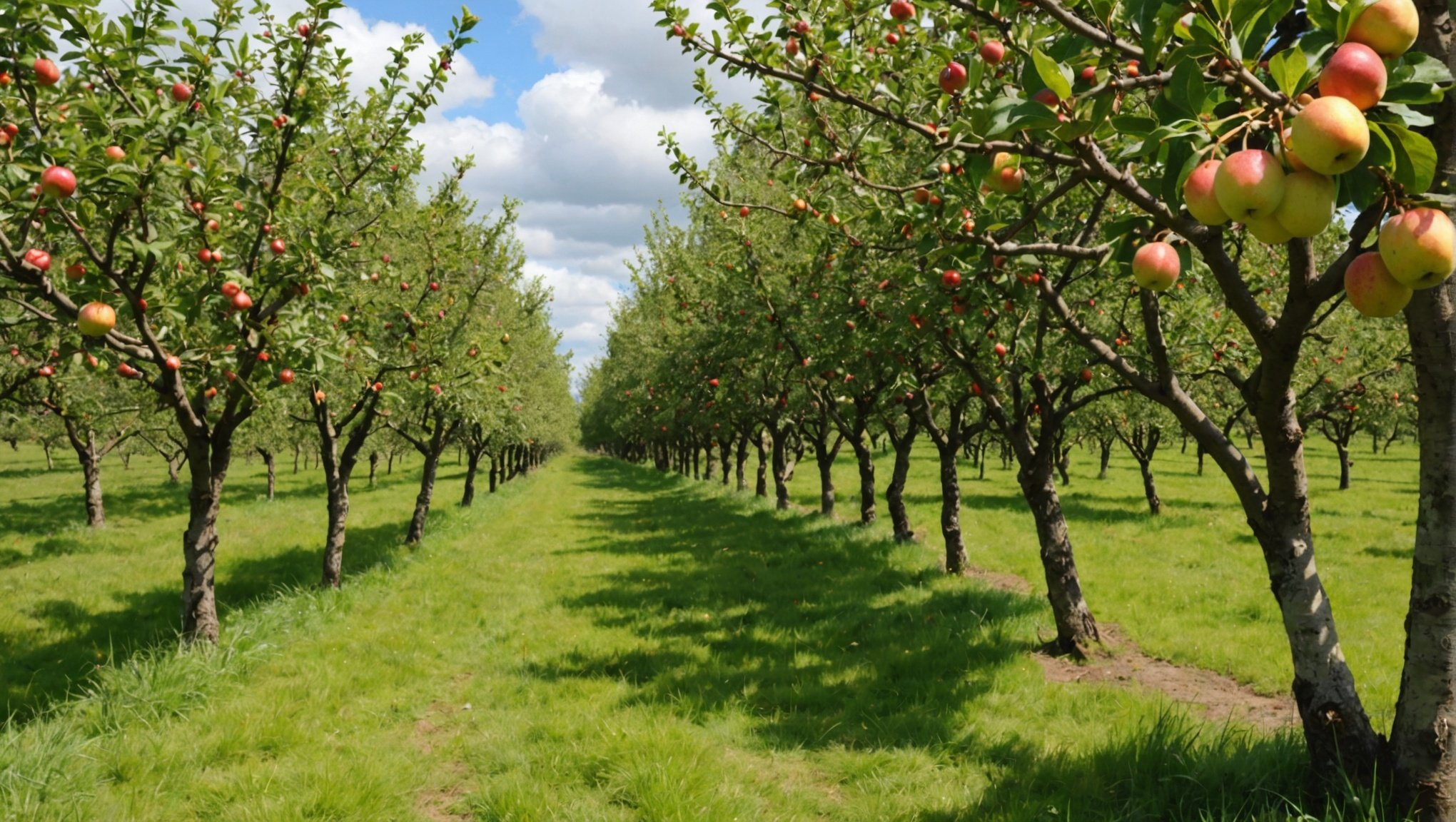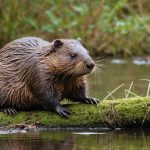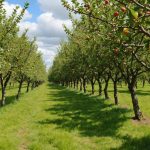Traditional orchards are more than mere landscapes; they are vibrant ecosystems, teeming with diverse wildlife. As pressures from modern agriculture and urbanization threaten these precious resources, UK citizens can take action to protect and restore these ecosystems. This guide explores practical ways to engage in conservation efforts, fostering a deeper connection to our natural heritage while empowering communities to make a significant impact. Join the movement to celebrate and support our traditional orchards and the wildlife they harbor.
Understanding the Importance of Traditional Orchards
Traditional orchards are more than just picturesque landscapes; they are vital ecosystems that have historically supported both agriculture and biodiversity. These orchards, often composed of a variety of fruit trees, were once common across the UK, serving as a crucial part of rural life. Today, their ecological importance is increasingly recognised due to their role in supporting local biodiversity.
A découvrir également : Engaging UK Citizens: A Guide to Participating in Wildlife Conservation through Citizen Science
Traditional orchards provide habitats for a wide range of species, including birds, insects, and small mammals. They are particularly important for pollinators, which rely on the diverse plant life within these areas. The mix of old trees and open spaces creates a unique environment that fosters biodiversity.
However, the decline of traditional orchards is alarming. Statistics indicate that the UK has lost a significant portion of its orchards over the past century, with some estimates suggesting a reduction of up to 90%. This decline poses a threat not only to biodiversity but also to the cultural heritage associated with these landscapes.
Dans le meme genre : The Impact of Beaver Reintroduction on UK River Ecosystems: A Closer Look at Nature”s Engineers
Preserving traditional orchards is essential for maintaining ecological balance and protecting the myriad of species that depend on them. Efforts to conserve these areas can help safeguard both the environment and the historical legacy of rural communities.
Ways to Get Involved in Conservation Efforts
Engaging with traditional orchard conservation can be both fulfilling and impactful. Local organizations often spearhead efforts to protect these valuable ecosystems, offering numerous volunteer opportunities. By participating, individuals can directly contribute to the preservation of biodiversity and cultural heritage.
Local Organizations and Volunteer Programs
Many local organizations focus on conserving traditional orchards. These groups often organize volunteer programs that allow community members to participate in activities such as tree planting, maintenance, and monitoring of wildlife. Such programs are designed to be inclusive, enabling individuals of all ages and skill levels to contribute.
Community Involvement and Initiatives
Community involvement is crucial for the success of conservation initiatives. Many communities have established projects aimed at promoting orchard preservation, such as educational workshops and public awareness campaigns. These initiatives often encourage residents to engage in hands-on activities and collaborate on solutions to ensure the longevity of traditional orchards.
By getting involved, individuals not only aid in conservation efforts but also gain a deeper appreciation for the ecological and cultural significance of traditional orchards. This involvement fosters a sense of stewardship and encourages collective action towards sustainable practices.
Creating Wildlife-Friendly Gardens
Designing a garden that supports local wildlife can transform your space into a thriving wildlife garden. By incorporating specific plants and features, you can attract various beneficial species.
Tips for Designing Wildlife Gardens
When planning your garden design, consider the needs of local wildlife. Include diverse plant species to provide food and shelter throughout the year. Habitat creation is essential, so aim for a mix of trees, shrubs, and flowering plants. These elements cater to different species, from birds and insects to small mammals.
Plants and Features to Include
To attract beneficial species, integrate water features like ponds or birdbaths. These provide drinking and bathing spots for birds and insects. Use logs or stone piles to create hiding spots for small creatures. Planting a variety of flowers ensures a continuous bloom, offering nectar and pollen for pollinators.
Importance of Native Plants
Native plants are crucial in fostering healthy ecosystems. They are well-adapted to local conditions and support more wildlife than non-native species. By choosing native plants, you enhance biodiversity and contribute to the ecological balance in your area. This approach not only benefits wildlife but also creates a sustainable and resilient garden.
Educating Others on Orchard Conservation
Educating the community about orchard conservation is a powerful way to foster awareness and action. Community education through workshops and awareness campaigns can significantly impact the preservation of traditional orchards.
Organizing Workshops and Educational Events
Workshops serve as interactive platforms where individuals learn about the importance of orchard conservation. These events can cover topics such as the ecological benefits of orchards, tree maintenance, and wildlife habitat creation. By engaging participants in hands-on activities, workshops not only impart knowledge but also inspire action.
Utilizing Social Media for Awareness
Social media is a dynamic tool for raising awareness about orchard conservation. Platforms like Facebook and Instagram can be used to share engaging content, including success stories, conservation tips, and event announcements. This approach broadens the reach of awareness campaigns, engaging a diverse audience and encouraging community participation.
Collaborating with Schools and Local Groups
Partnering with schools and local groups enhances outreach efforts. Educational programs in schools can introduce students to the concept of biodiversity and the role of orchards in ecosystem health. Collaborations with local groups can lead to community-driven initiatives, fostering a collective sense of responsibility towards orchard conservation.
Supporting Local Produce and Farmers
Engaging with local produce offers a direct way to support traditional orchards and the farmers who maintain them. Purchasing fruits and products from these orchards helps sustain their operations and keeps these vital ecosystems thriving.
Importance of Buying Local Produce
Buying local produce from traditional orchards not only ensures freshness but also supports the local economy. It reduces the carbon footprint associated with transportation and promotes a sustainable lifestyle. By choosing local, consumers can enjoy seasonal fruits and contribute to the preservation of cultural heritage linked to these orchards.
Connecting with Local Farmers
To support farmers, consider visiting local farmers’ markets or joining community-supported agriculture (CSA) programs. These platforms allow direct interaction with farmers, providing insights into their sustainable farming practices. Engaging in conversations with farmers can deepen understanding and foster a sense of community.
Benefits of Sustainable Farming Practices
Sustainable farming practices employed by local farmers enhance biodiversity. Techniques such as crop rotation and organic farming reduce chemical usage and promote healthy soil. These practices benefit the environment and the species that depend on it, ensuring the long-term viability of traditional orchards. Supporting farmers who adopt sustainable methods contributes to a healthier ecosystem.
Government and Policy Initiatives
To support the preservation of traditional orchards, the UK government has implemented various conservation policies. These policies aim to protect biodiversity and maintain the cultural heritage associated with these landscapes. Government support is crucial in ensuring the longevity of these ecosystems.
Overview of UK Government Policies
The government has introduced several initiatives that focus on orchard conservation. These include grants and schemes that encourage landowners to maintain traditional orchards. By providing financial incentives, the government helps to offset the costs associated with orchard management and restoration.
Funding Opportunities for Community Projects
There are numerous funding opportunities available for community-led conservation projects. These funds can be used for activities such as tree planting, habitat creation, and educational workshops. Community groups can apply for grants from organisations like the Heritage Lottery Fund, which supports projects that preserve natural heritage.
Advocating for Better Conservation Policies
Individuals can play a role in advocating for improved conservation policies. Engaging with local representatives and participating in public consultations can influence policy decisions. By voicing support for stronger conservation measures, communities can help shape policies that prioritise the protection of traditional orchards.
Resources for Orchard Conservation
Access to comprehensive conservation resources is crucial for anyone involved in orchard preservation. These resources provide valuable insights and guidance on best practices for maintaining and restoring traditional orchards.
Guides on Best Practices for Orchard Management
Several guides are available that focus on effective orchard management techniques. These guides cover a range of topics, including tree care, pest management, and habitat enhancement. They are designed to assist both beginners and experienced individuals in implementing sustainable practices that support biodiversity.
Educational Materials
Educational materials are essential for spreading awareness and knowledge about orchard conservation. These materials often include detailed information on the ecological importance of orchards and the steps needed to preserve them. They serve as a foundation for community education initiatives and workshops.
Organizations Providing Support and Materials
Numerous organizations offer support and materials to aid in orchard conservation efforts. These organizations often provide technical assistance, funding opportunities, and access to expert advice. By connecting with these groups, individuals and communities can gain the resources needed to successfully conserve traditional orchards.
The Role of Technology in Conservation
In the realm of conservation, technology plays a pivotal role in enhancing efforts and outcomes. Innovative conservation technology tools are revolutionising how we approach ecosystem preservation. These tools facilitate efficient data collection and monitoring, providing valuable insights into biodiversity trends.
Innovative Technologies Aiding Conservation
Advanced technologies, such as drones and satellite imaging, offer new avenues for monitoring large areas with precision. These innovations allow for the real-time tracking of wildlife and habitat changes, enabling swift responses to environmental threats. Additionally, sensor networks gather data on climate conditions and species behaviour, contributing to a comprehensive understanding of ecosystems.
Apps and Platforms for Tracking Biodiversity
Mobile apps and online platforms have become essential in tracking biodiversity. These tools allow both experts and enthusiasts to document species sightings and environmental changes. By aggregating this data, scientists can analyse patterns and identify critical areas for conservation. Such platforms also promote citizen science, encouraging public participation in data collection.
Community Engagement Through Technology
Technology fosters community engagement in conservation projects. Interactive apps and social media platforms connect individuals with conservation initiatives, facilitating knowledge sharing and collaborative efforts. By harnessing technology, communities can actively participate in preserving biodiversity, ensuring sustainable practices are adopted and maintained.
Success Stories in Orchard Conservation
Exploring success stories in orchard conservation reveals the impact of dedicated community efforts. Across the UK, several case studies showcase how local initiatives have revived traditional orchards, fostering both ecological and cultural benefits.
One notable example is the restoration project in Herefordshire, where a community-led initiative transformed a neglected orchard into a thriving habitat. This project not only enhanced local biodiversity but also strengthened community bonds through shared goals. The restoration involved planting native fruit trees and implementing sustainable practices, serving as an inspiring model for other regions.
Another success story comes from Somerset, where a group of volunteers collaborated with local authorities to preserve an ancient orchard. Their efforts included educational workshops and public engagement activities, highlighting the orchard’s historical significance. This approach not only revitalised the landscape but also raised awareness about the importance of traditional orchards.
These stories underscore valuable lessons learned, such as the importance of community involvement and the use of native species. By replicating these strategies, other areas can achieve similar success in orchard conservation, ensuring these vital ecosystems continue to thrive.
















